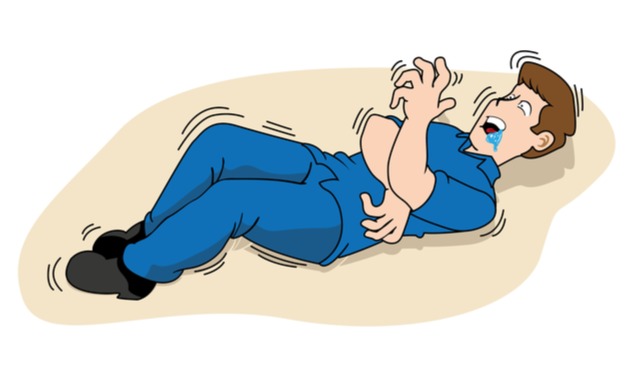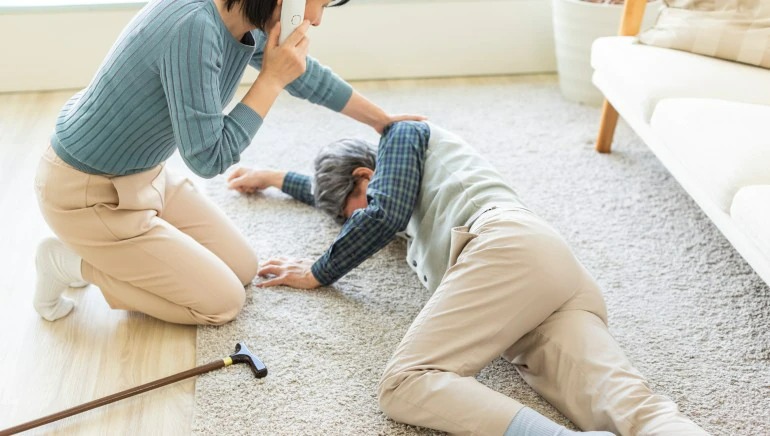Is it the right way to put your hands in your mouth?
Notes when giving first aid to the sick epilepticDr. Le Van Tuan, a neurologist at Tam Anh General Hospital, emphasized that inserting objects into the patient so as not to bite the tongue, clamping the patient’s body to control convulsions can be dangerous. life-threatening.
Epileptic what?
According to Dr. Tuan, epileptic It is a disorder of the central nervous system, which occurs when there is simultaneous stimulation of a group of neurons in the cerebral cortex leading to sudden and uncontrolled electrical discharges.
Manifestations of the disease epileptic are bouts epileptichas very diverse clinical manifestations, depending on the location of the foci epileptic in the brain, how widespread it is.
In which, the attacks epileptic Generalized convulsions are usually the most severe presentation. The patient may fall to the ground, rolling eyes, stiffening, convulsions, shortness of breath, sometimes with urinary incontinence, tongue biting, and foaming at the mouth occurring within minutes.

First aid people with epilepsy should not put their hands in their mouths. Illustration
In addition, seizures may manifest as partial convulsions, altered consciousness (the patient may stand stunned), altered sensations or senses, etc.
Epilepsy patients can have seizures anywhere, at home, in the office, on the road, on the bus, at the swimming pool…
TS.BS Cao Vu Hung – Director of the Neurological Center, National Children’s Hospital added that epilepsy is a complex disease caused by many causes, but there are a few main causes such as:
Magnetic malformations during pregnancy such as birth defects of the central nervous system.
The baby had complications during childbirth, was born asphyxiated, causing hypoxia and respiratory failure, requiring mechanical ventilation.
Nerve infection problems such as bacterial meningitis, encephalitis, parasitic infections in the brain, etc.
Seizures can also appear in children with fever many times with a certain rate.
Epilepsy after nerve injury or in diseases such as brain hemorrhage, brain tumor, metabolic – genetic problems …
Mistakes when giving first aid to people with epilepsy
According to Dr. Tuan Anh, when giving first aid to people with epilepsy, many people make mistakes.

Correct first aid actions for people with epilepsy. Source jamaicahospital
Put objects in your mouth to prevent biting your tongue
When detecting a patient having a seizure, many people think that putting something in their mouth (such as a finger, spoon, chopsticks, pen, etc.) will help the patient avoid biting their tongue.
However, this is an unnecessary action, and it can even be dangerous to the patient.
“During a convulsion, the tongue does not stick out, but often drops slightly inward, so the risk of the patient biting the tongue is very little, usually the patient bites on the side of the tongue.
In addition, during a seizure, the patient’s teeth will be tightly clenched, so do not pry the patient’s teeth to insert foreign objects into the patient’s mouth. This can cause temporomandibular joint dislocation, tooth fracture, gum damage.
In some cases, the patient can break the object, swallow the debris into the throat, cause suffocation, leading to death.”
Crowd gathering around sick people
While people with epilepsy need an open environment to breathe, increase blood circulation and oxygen to the brain. The gathering will cause people with epilepsy to lose oxygen, more stuffy.
Improperly moving the patient
Pulling, pulling, or tugging on someone who is having a seizure can make the condition worse. Therefore, it is necessary to limit the movement of sick people unless they are in dangerous areas such as swimming, moving on the road, on stairs, near sharp objects, etc.
Clamp the patient’s body to control the convulsion

When giving first aid to a person with epilepsy, it is best to lay them on their side and call 911. Photo healthshots
One of the most common mistakes made when giving first aid to a person having a seizure is trying to hold the patient’s limbs to control the seizure.
Not only is this ineffective, but it can also lead to dislocations, fractures, and even more severe seizures.
Give artificial respiration to the patient
People who are having seizures can still breathe on their own, so artificial respiration for them is not necessary.
Squeeze a lemon into the patient’s mouth to prevent seizures
The concept of squeezing a lemon into a patient’s mouth to prevent seizures has no scientific basis at all. Many people think that by squeezing lemons into their mouths, the patients will stop having seizures, but the reality is that the seizures stop on their own whether lemon is squeezed or not.
Squeezing lemons can be dangerous because the patient is losing consciousness, unable to swallow, causing aspiration into the lungs and respiratory failure.
Similarly, patients should not be given water or medication until they are fully awake.
First aid for people with epilepsy properly
According to Doctor Do Quoc Hung, Department of Examination and On-Demand Treatment, 115 People’s Hospital, in order to properly save people with epilepsy, it is necessary to:
– Keep calm
– Protect the patient from injury during a convulsion by moving objects that can cause trauma to the patient.
– Place a thin, soft pillow under the patient’s head; Loosen collars, ties, belts…
– The patient should be lying on his side, wiping away saliva or vomit (if any).
– Record the duration of the seizure (how long does the seizure last). If the seizure lasts more than 5 minutes, call 911 or take the patient to the hospital immediately.
– After a seizure, the patient is often confused, so stay with the patient until the patient is awake
All patients with epilepsy should be examined and treated by a specialist. The outcome of treatment depends on the patient’s compliance with follow-up visits and treatment adherence.
How is epilepsy treated?
Epilepsy has many different degrees, in mild disease, children only have a few seizures. When treated with antiepileptic drugs correctly and completely, the disease will no longer recur and the disease will be cured.
The severity of the disease, convulsions occurs frequently with other diseases such as cerebral palsy, growth retardation, long-term treatment, even complete dependence on antiepileptic drugs, there is a proportion of patients who do not respond. medication (drug-resistant epilepsy).
Epilepsy, if not detected early, timely intervention and treatment will lead to many consequences, seriously affecting the development as well as the child’s later life. It can be mentioned that in the process of living, children having seizures can easily cause accidents, drowning, burns …
Prolonged convulsions, if not properly and promptly treated, can cause respiratory failure, cerebral hypoxia, and death.
In addition, seizures can affect a child’s intelligence and movement. Children’s learning decline, poor action control, limited social communication… causing difficulties in learning and inconvenience in daily activities, reducing the quality of life and later development of children.
Dr. Cao Vu Hung (Director of the Neurological Center, National Children’s Hospital)
at Blogtuan.info – Source: danviet.vn – Read the original article here



